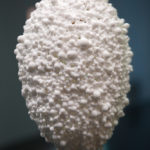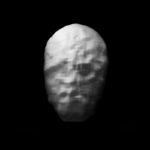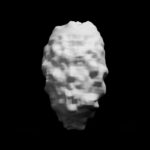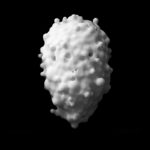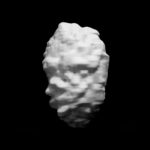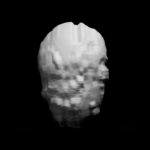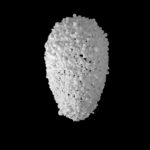Sterling Crispin, Data-Masks (Series), 2013-2015

Added to the Museum of Data by Mara Johanna on Sunday, March 17, 2019. Museum of Data Collection ID: 236.
Public description: These ghost-like and fictitious looking visages reveal how surveillance software systems perceive and construct our identity. To this end, Crispin guides an algorithmic system based on genetic, facial detection and recognition algorithms to reconstruct and thereby reveal its understanding of human identity. The mathematical analysis of biological data becomes material form based on the data sets generated from a collection of thirteen thousand images of six thousand individual human faces. In this sense, the data-masks are evolved expressions of feature combinations between the thousands of individuals used to train machine learning systems. These artefacts are representations of human faces who have been quite literally ingested into the body of the material. The materiality of algorithms performing codes stored in bits is doubled up at the moment of materializing the masks in actual material via a selective laser sintering. Here codes are translated into signals which guides a triangulated beam of UV light which in a bed of powdery nylon to fuse precise amounts of material together with high accuracy. Layer by layer the art work emerges from the flat bed of powder, similar to how it enters the world from the screen into three dimensional space. SLS technology is a method popular among aviation and industrial applications but was developed under sponsorship by DRAPA, the Defense Advanced Research Project of the US Military. Together with the machine learning algorithms used for biometrics, Crispin’s masks are born from surveillance and military technology. They therefore not only remind us of the materiality and material impacts of his employed technology but highlight the politics of such materiality. The data-masks are typically mounted on mirrors so the body of the viewer can be brought into the work. If positioned directly in front of the serial installation, one perceives the shapes not only as ghastly looking faces but they begin to function as masks. While to us these objects are only vaguely reminiscent of facial features, each works is designed to be recognized and verified as human faces by facial detection and recognition systems. Inscribed into the plasticity of the objects are thus representations of human features solely visible to machine vision. The Data masks therefore not only illustrate the way these networked systems capture, classify, and represent us but equally function as an activist object intended for use in acts of protest, poetry and civil disobedience.
Materials used: 3D Printed Nylon, Mirror, Facial Recognition and Detection Algorithms, Genetic algorithms
Credit: © Sterling Crispin
Copyright: © Sterling Crispin
Creation date: 2013/01/01 12:00:00
External link: http://www.sterlingcrispin.com/data-masks.html
Files associated with this object:
